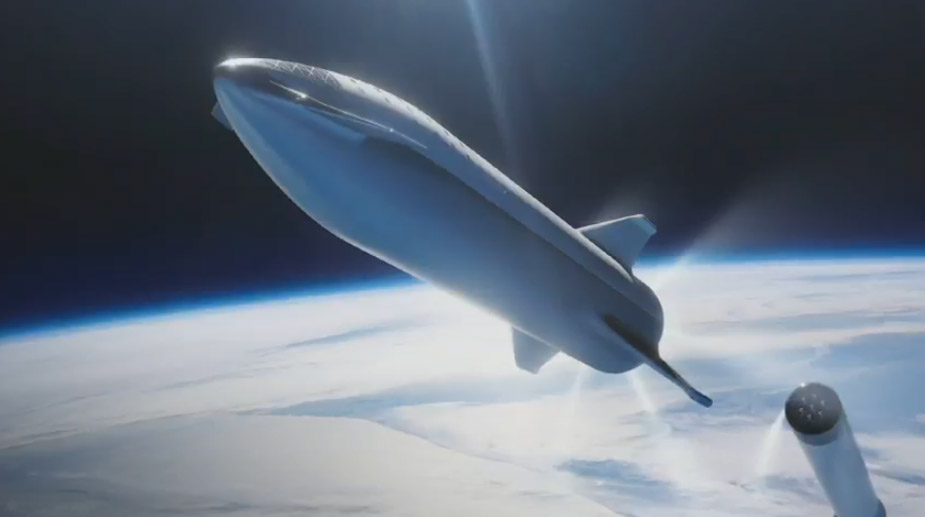
SpaceX's Mars-colonizing rocket will be even more powerful than we had thought.
The Super Heavy megabooster, which will launch SpaceX's 100-passenger Starship vehicle toward Mars, the moon and other distant destinations, was originally envisioned to feature 31 next-generation Raptor engines. But the rocket will actually sport 35 Raptors, company founder and CEO Elon Musk announced yesterday (July 21).
"Starship Super Heavy with 35 Raptors," Musk said via Twitter. "Full stack is 41 rn, but kinda beggin for just one more," he added in another tweet yesterday.
Related: SpaceX's Starship and Super Heavy Mars Rocket in Pictures
Full stack is 41 rn, but kinda beggin for just one more …July 21, 2019
Starship will be powered by six Raptors, which explains that "41" reference (35 + 6 = 41).
As for "beggin for just one more" — that may be a reference to Douglas Adams' "The Hitchhiker's Guide to the Galaxy," the seminal sci-fi book series that counts Musk among its many fans. In the series, a computer named Deep Thought determines that the Answer to the Ultimate Question of Life, the Universe, and Everything is 42.
Musk has promised a more involved update of the Starship-Super Heavy system soon — shortly after Starship's test prototype Starhopper flies untethered for the first time. That milestone was supposed to occur last week, but SpaceX pushed things back after Starhopper was engulfed in flames during a preflight static-fire test.
Get the Space.com Newsletter
Breaking space news, the latest updates on rocket launches, skywatching events and more!
Starhopper emerged from the fireball, which was caused by a post-test fuel leak, mostly unscathed, Musk said. The company aims to perform the untethered hop sometime this week.
This first iteration of Starhopper has one Raptor engine. The vehicle has made two brief, tethered hops to date, both in early April at SpaceX's South Texas launch site. Future, higher-flying versions of the vehicle will likely have three Raptors, Musk has said.
SpaceX envisions Starship and Super Heavy eventually taking over all of the company's spaceflight duties, from launching satellites to lofting astronauts to cleaning up space junk. The company has one Starship-Super Heavy mission officially on the docket, a round-the-moon flight booked by Japanese billionaire Yusaku Maezawa.
That flight is targeted for 2023. But SpaceX hopes to begin commercial operations of Starship and Super Heavy as early as 2021, likely with commercial satellite launches.
- See the Evolution of SpaceX's Rockets in Pictures
- SpaceX's Raptor Engine Hits Power Level for Starship Launches
- SpaceX's 'Starship' Prototype Coming Together in Florida (Photos)
Mike Wall's book about the search for alien life, "Out There" (Grand Central Publishing, 2018; illustrated by Karl Tate), is out now. Follow him on Twitter @michaeldwall. Follow us on Twitter @Spacedotcom or Facebook.
Join our Space Forums to keep talking space on the latest missions, night sky and more! And if you have a news tip, correction or comment, let us know at: community@space.com.

Michael Wall is a Senior Space Writer with Space.com and joined the team in 2010. He primarily covers exoplanets, spaceflight and military space, but has been known to dabble in the space art beat. His book about the search for alien life, "Out There," was published on Nov. 13, 2018. Before becoming a science writer, Michael worked as a herpetologist and wildlife biologist. He has a Ph.D. in evolutionary biology from the University of Sydney, Australia, a bachelor's degree from the University of Arizona, and a graduate certificate in science writing from the University of California, Santa Cruz. To find out what his latest project is, you can follow Michael on Twitter.









